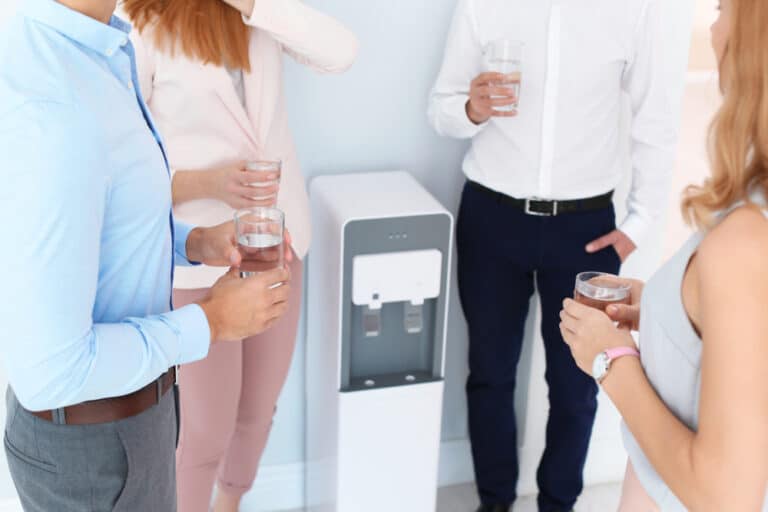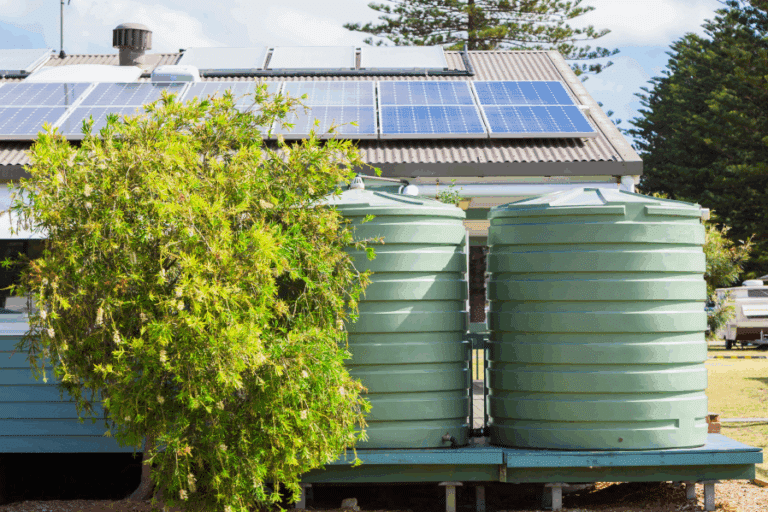Preparing the process and defining objectives for staff awareness
To prepare the awareness campaign process, it is helpful to make an assessment to identify the existing communication strategy and tools, as well as factors of success and failure of any past experiences. This assessment also provides insights into employee behaviours related to water use. Here is an example of a tool that can be offered to employees: An awareness-raising survey
The development of the awareness-raising project also involves defining the objectives and goals pursued.
Goals should be realistic and achievable. Indicators, such as water consumption for example, can be defined at this stage and monitored throughout the campaign to assess its effects.
Involving all relevant parties
Involving all relevant parties from the very beginning of the programme is crucial to get everyone onboard from the outset and ensure the long-term success of the awareness campaign, whether the aim is to reduce the water consumption of the building, the employees, or across the company’s operations.
The management team must champion water-saving policies and procedures by providing the necessary resources to establish a sustainable commitment and by reinforcing the implementation of effective measures (e.g. appointing dedicated staff, allocating a budget and human resources, and rewarding and recognising efforts). These actions contribute to foster a culture in which employees take pride in and pay closer attention to environmentally responsible practices within the company. Moreover, sustainable practices adopted in the workplace are often replicated at home by individuals, which amplifies the positive impact.
Employees can be the drivers of change by adopting responsible water management behaviours. They can also contribute valuable ideas to help save water. Raising employee awareness is a great way to uncover potential savings and get staff to commit to a specific implementation programme.
Customers also benefit from sustainable practices, because the company’s brand image and credibility are strengthened. A commitment to sustainable water use is a way to meet the expectations of conscious consumers and business partners. Furthermore, such a practice can help open new markets, optimise costs, and attract new customers who value environmental issues. This approach is in line with a CSR (Corporate Social Responsibility) policy, in response to the challenges of sustainability.
Implementing an employee awareness campaign
Training staff on water issues
Encourage employees to save water, by offering general training on water in industry or within the company, specifically on water conservation practices, or through targeted training courses that raise awareness among end users about how their tasks impact water consumption:
- Best practices for the efficient use of water in the workplace
- Water/leak monitoring/management (identification, traceability, follow-up)
- The proper conduct of operations and equipment that generate effluents
By integrating water and energy management practices into the initial training of staff, employees can clearly identify their role and responsibilities.
Water stewardship experts can help explain the concrete steps that can be implemented for responsible water management in the building and/or around company property.
Educational workshops discussing the company’s water footprint can also be interesting tools to support employees in adopting a sustainable approach to water efficiency.
Highlighting achievements and savings
A key factor to the success of the water efficiency plan or strategy is continuous reporting and updating the plan as needed. Highlighting progress demonstrates accountability and celebrating achievements strengthens commitment and engagement. It is essential to provide regular updates on water usage, illustrated in a simple and visually appealing format.
- Communicating regularly with internal teams on the progress of actions and the results achieved: key figures, successes, challenges, improvements.
- Reporting on the water management data generated
Promoting active participation
- Fostering active employee participation in water efficiency initiatives to increase their overall impact.
- Creating opportunities for employees to share their own ideas, and pathways for reflection or continuous improvement.
- Encouraging employees to report water-related issues promptly can help detect and resolve problems early.
Here are a few communication channels to gather suggestions, ideas, and feedback:
- Suggestion box (physical or virtual)
- Direct contact with designated resource persons, who will serve as key contacts and communication bridges between management and employees.
- Discussion forums to strengthen mutual support: organise sessions where colleagues can share experiences, tips, and the challenges they face on a daily basis;
- Surveys on water consumption and usage, or field surveys aimed to identify potential sources of waste.
Further information:
Setting up an in-house “resource conservation” team
- This team is responsible for monitoring water consumption and usage within the organisation, as well as for identifying opportunities for improvement.
- The team in question also assumes responsibility for organising regular reminder campaigns to ensure that the recommended practices take root over the long term.
- Ideally, the team includes representatives from all departments, depending on the size of the organisation.
- External experts may be consulted if the organisation’s internal know-how is insufficient.
Following the process and ensure sustainability of results
Following and communicating progress
To guarantee long-lasting behavioural change, it is necessary to evaluate and communicate results, while also regularly adapting the content and messaging of the communication campaign over time.
Evaluation helps determine which elements are performing well and worth sustaining. The campaign should be evaluated not only based on its results but also on the level of engagement and support it generates.
Integrating the action plan into corporate communication
Raising staff awareness of the importance of reducing water consumption should be fully integrated into the company’s internal communication strategy. It can be communicated through various channels:
- Internal media: management reports, newsletters, intranet, notice boards in common areas, internal bulletins, etc.
- Team meetings: regularly include a “water management” item on the agenda to keep attention focused on the topic
- Digital tools: create a dedicated section on the intranet, in newsletters, or through email campaigns to share tips, feedback, and updates
- External communication: include environmental labeling on products or highlight the company’s commitment through materials aimed at customers, partners, and stakeholders
- Visual identity: enhance the visibility of the campaign by adopting a consistent logo, slogan, or graphic charter
- Seasonal communication: adapt messages to the time of year to increase impact (e.g., emphasise water-saving messages during summer)




